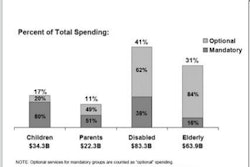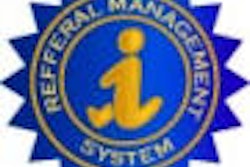Radiologists in the U.S. know they're reading more studies and putting in longer hours than ever before, but exactly how much are they shouldering? A study in the September issue of Radiology examined radiologists' 2002-2003 workload in comparison with data from 1991-1992 and found that, on average, their workload increased 25.1% over the period.
"If it is true that imaging per person among the general population grows at least as fast as imaging per person among the Medicare population, then with total population growing at approximately 1% per year there is a substantial imbalance between the growth in the demand for imaging and the growth in the supply of radiologists qualified to perform these procedures and interpret these images," wrote study authors Mythreyi Bhargavan, Ph.D., and Jonathan H. Sunshine, Ph.D., from the American College of Radiology (Radiology, September 2005, Vol. 236:3, pp. 920-931).
Their study was based on 2003 survey data from 1,924 interventional radiologists, osteopathic radiologists, nuclear medicine specialists of interest, and other radiologists. The respondents reported the number of procedures performed per year in their practice, the numbers of full-time and part-time radiologists in the practice, and the typical number of hours worked per week by each of those categories of radiologists, according to Bhargavan and Sunshine.
The authors calculated the number of procedures per full-time equivalent (FTE) radiologist as the ratio of reported procedures for the practice to the calculated number of FTE radiologists. In addition, they surveyed respondents as to practice location, such as a metropolitan area of greater than 1 million people, and the type of practice, such as academic or private.
Bhargavan and Sunshine found that the average number of procedures performed per FTE radiologist from all categories in 2003 was 13,900. There was, however, a wide variation across the survey spectrum.
"Overall, one-quarter of radiologists were in practices that performed an average of 10,000 or fewer procedures per FTE radiologist per year (25th percentile), while another quarter were in practices that performed an average of 17,100 or more procedures per FTE radiologist per year (75th percentile)," they wrote. "Thus, those in the top quarter performed at least 70% more procedures annually than those in the lowest quarter. For every practice type, this difference was larger than 50%."
The data were broken out further by type of practice. Bhargavan and Sunshine reported that the average workload of private nonacademic multiradiologist practices was 15,200 procedures per FTE radiologist, which was significantly larger (p < 0.01) than the overall average workload across all practice types.
Radiologists who conducted their practice in an academic environment performed an average of 9,900 procedures per year, according to the authors, while those in government-based practices handled an average of 11,800 procedures per year.
"The average of 13,900 procedures performed per FTE radiologist in 2003 was 1,100 procedures higher than the average in 1998-1999, 2,100 procedures higher than the average in 1995-1996, and 2,800 procedures higher than the average in 1992," the authors wrote.
Bhargavan and Sunshine also examined the workload in terms of relative value units (RVUs) per procedure. They estimated that the average number of physician work RVUs per FTE radiologist for the 2003 survey year was 9,100. The authors noted that the estimated RVUs per FTE radiologist averaged a 3.9% growth rate per year, and that there was an RVU work increase of 52.2% from 1992-2003.
A related study, by Michael Cortegiano published in the RBMA Bulletin (March-April 2005, Vol. 40:2, pp. 20-25), surveyed 27 U.S. academic institutions from 21 states and the District of Columbia for fiscal year 2004 (end-June 30). His data found that the average work RVU per FTE academic radiologist was 7,607, an uptick of 3.5% from the fiscal year 2003 survey and a 59.9% increase over the past eight years.
Although the 2003 ACR survey data demonstrated a dramatic increase in radiologist workload in terms of performed procedures and RVUs, Bhargavan and Sunshine cautioned against using the medians and averages as benchmarks.
"In our study there was wide variation in radiologists' workloads within each subcategory, a finding that is unexplained," they wrote. "Therefore, the means, medians, 25th percentiles, and 75th percentiles reported in this article should not be used as benchmarks or standards. Also limiting their relevance as standards is the fact that our analysis did not account for the other activities of practices. For instance, calculations from this survey indicate that radiologists in academic practices spend approximately one-third of their time on activities such as teaching and research rather than on pure clinical work. This does much to account for the lower average workload of such radiologists in terms of the number of procedures per FTE radiologist."
By Jonathan S. Batchelor
AuntMinnie.com staff writer
September 22, 2005
Related Reading
Technology, technique help ease radiologist shortage, November 2, 2004
Making RVU-based productivity assessment work for you, October 29, 2004
On getting a job in radiology: a primer for residents and fellows, October 18, 2004
Survey says rads are working harder for less, April 15, 2004
Survey predicts big loss of practitioners to retirement, changing work patterns, December 23, 2003
Copyright © 2005 AuntMinnie.com



















